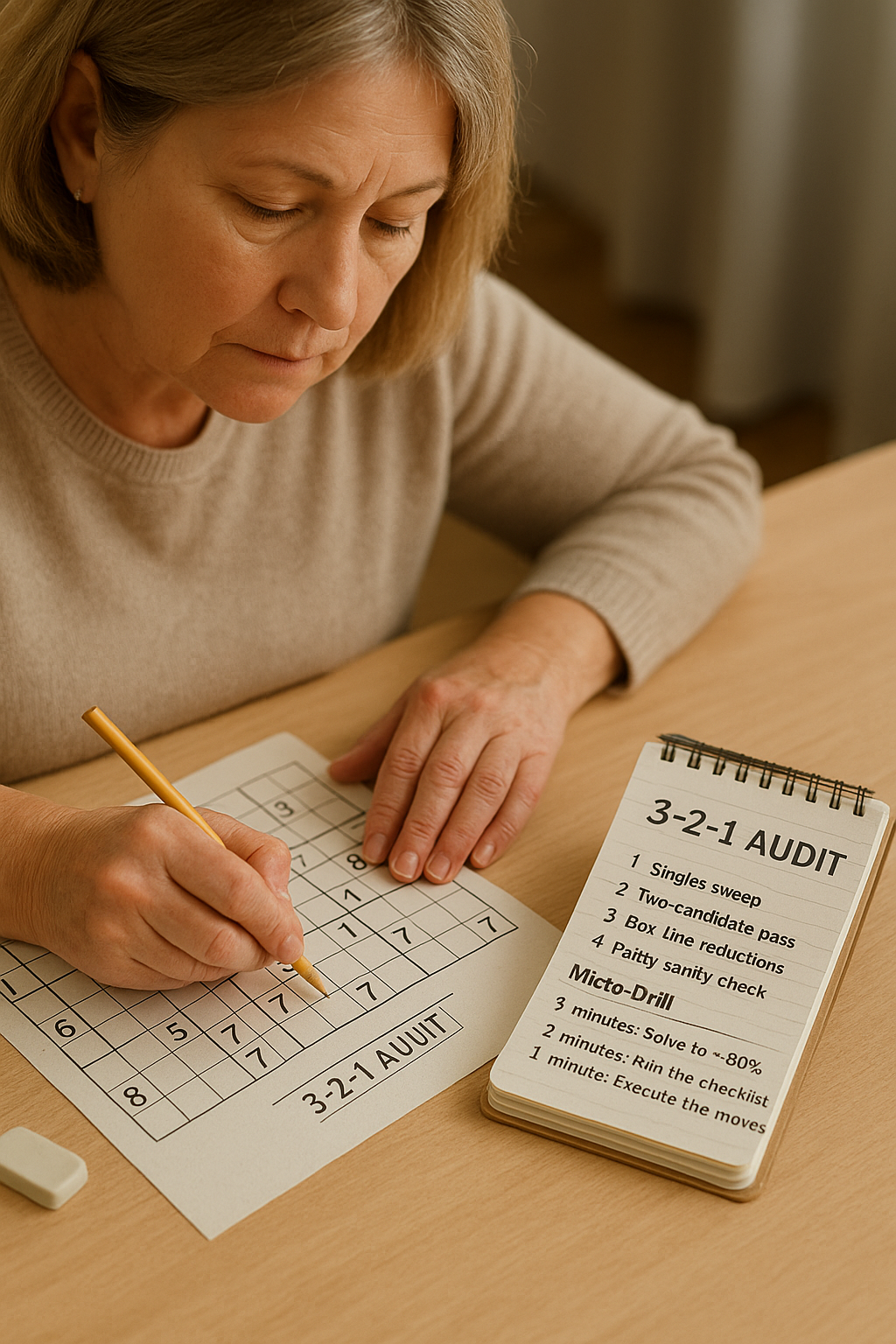
Closing the Grid: Endgame Mastery for Error-Proof Finishes
The most heartbreaking Sudoku errors don’t happen at the start—they strike in the last 20% of the solve. You see the finish line, relax a touch, and a single misread candidate derails the endgame. What if you could make your finishes predictable, calm, and nearly mistake-free?
What you’ll learn: a compact endgame checklist, a “3-2-1 audit” to prevent blunders, and lightweight analytics to reduce late-stage stalls. You’ll also get a quick brain-health note on focus and fatigue—plus a call to practice on a live free Sudoku table (you can launch a clean grid in seconds).
Why Endgames Go Wrong
- Attention drop: the moment you sense “it’s solved,” vigilance dips
- Candidate clutter: stale notes hide forced singles
- Rushing the last digit: “obvious” placements bypass proof
- Confirmation bias: you try to make a number fit a narrative
The Endgame Checklist (Run It Twice)
Singles sweep
Hidden/naked singles across rows → columns → boxes. Clear any conflicting candidates immediately.Two-candidate pass
Focus on cells with exactly two notes. If one is invalidated by row/column/box logic, lock the other.Box–line reductions
If all candidates of a digit in a box sit on one row/column, eliminate them from the rest of that row/column.Parity sanity check
Count remaining instances for each digit (1–9). Any digit missing in a unit? Something’s off—back up one move.
Micro-Drill: The 3-2-1 Endgame Audit
- 3 minutes: Solve to ~80% completion, then stop
- 2 minutes: Run the checklist above without placing anything—only cross off impossibilities
- 1 minute: Execute the forced placements you revealed
Track two metrics: endgame mistakes per puzzle and stalls >60s in the final quarter. Repeat daily. After a week on your performance board, you should see a sharper, calmer finish.
Reflective Questions
- Do you still double-check eliminations once “the puzzle is basically done”?
- Are your notes tidy enough for patterns to pop—or do ghosts linger?
- When the last box has two candidates, do you prove it or guess?
- Where do you stall most: singles, pairs, or structure (box–line)?
Brain & Attention Note
Short, focused bursts reduce fatigue-related slips. Many solvers find that a 60–90 second reset (blink away, breathe, quick singles pass) before the endgame lowers error rate. Treat breaks as a skill tool, not a luxury.
Methodology & Workflow
- Data sources: session logs of stalls, error reconstructions, and solve-time splits; platform stats for median vs. mean times
- Limitations: observational data, personal variability, and differing note conventions
Summary & Call to Action
Finish strong by default: run the checklist, audit in 3-2-1, and track stalls.
👉 Ready to put it into play? Start your endgame practice and log your next three closes—then compare calmness and accuracy to last week.

 German
German
 Japanese
Japanese
 Arabic
Arabic
 Spanish
Spanish
 French
French
 Russian
Russian
